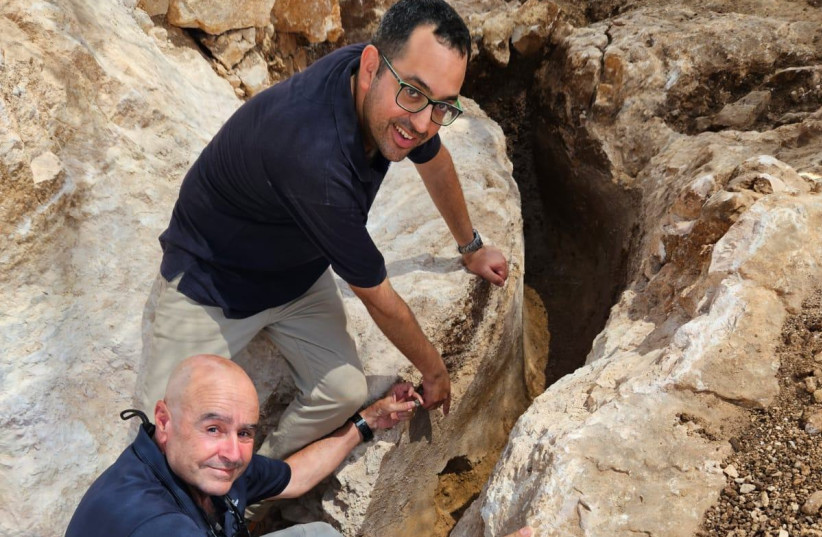Ancient aqueduct from time of Roman occupation discovered in Jerusalem
Archaeological excavations in the Giv’at Hamatos neighborhood of Jerusalem uncovered an ancient Aqueduct that once carried water throughout Jerusalem’s upper city during the time of Rome’s occupation, the Israel Antiquities Authorities announced on October 2.
The tunnel once fed water to the homes of Jerusalem’s elite, including the homes of prominent figures like Roman emperor Herod’s palace, 2000 years ago. The duct also continued functioning throughout Jerusalem in 70 CE, after the Tenth Roman Legion destroyed the Second Temple.
“Towards the end of the Second Temple period, when Jerusalem underwent significant expansion, and Herod’s Temple was built, the water flowing in the springs and stored in the cisterns was no longer sufficient for the thousands of residents and pilgrims in the city. Water had to be transferred to the city from afar,” said Dr. Ofer Sion and Ruth Cohen, the excavation directors on behalf of the Israel Antiquities Authority.
“Due to this situation, the Hasmoneans and King Herod built two complex aqueducts to transport water to Jerusalem, constituting one of the grandest and most sophisticated water projects in the country, and indeed, in the ancient world. The aqueducts trapped water from springs in the Bethlehem region, and by the construction of large pools, and the implementation of hydraulic laws (the siphon principle of communicating vessels based on the force of gravity), topography, and an extraordinary level of engineering, the water flowed over many kilometers.”

Other finds in the ancient Aqueduct
The excavation efforts, funded by Arim Urban Development Company, also led to the discovery of a coin from 67/68 CE. The coin dates back to the first Jewish revolt against the Romans, which was before the destruction of the Second Temple. It is believed that Roman occupiers had intentionally left the coin in the duct.
“Even with the establishment of the new pagan city Aelia Capitolina, the Tenth Legion continued to use and upkeep the sophisticated aqueduct,” explain Sion and Cohen. “We found about 25 coins in the aqueduct foundations, distributed at fairly equal distances. In our opinion, this is hardly coincidental, but just as is still common today, the Tenth Legion builders placed the coins there for good fortune.”
“The exposure of this section of the Upper Aqueduct and the discovery of the 25 coins may enable– possibly for the first time—an absolute dating of the different stages of the construction of Jerusalem’s water aqueducts. It may shed light on the question of who built the first aqueduct—whether it was the Hasmoneans, or King Herod,” the researchers say.
The route of the Upper Aqueduct followed a convenient and gentle topographical course. So far, three distinct parts have been identified: the lower two parts dating from the Late Second Temple period, and the upper part dating from the days of the Roman Legion stationed in the upper city.





Comments are closed.